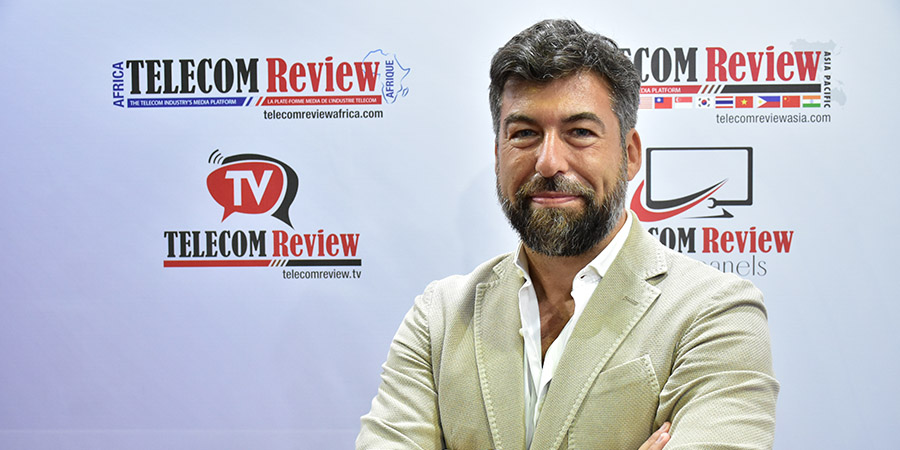With a surge of technology taking 2021 by storm, InteracTVty ushers in a new wave of OTT. At GITEX 2021, Telecom Review had an exclusive one-on-one with David Esplá, managing partner at InteracTVty. He discussed about the latest OTT technology to come out of the company, how it all started, and where they are going in the next 5 years .
InteracTVty is the first hybrid mix of e-commerce and television commerce. How did you come up with the idea to incorporate the two?
The reason is simple, our company doesn´t come from the audiovisual sector, nor is it broadcaster.
We are a digital technology company with a strong R&D content. Initially, we didn’t consider selling audiovisual-technology content. Although of course we do it now, we mainly design and build it with the aim of transferring all digital actions and behaviors to audiovisual content without having to leave them.
In other words, our goal is to convert the audiovisual content (so, videos) into a format with which we are used to buying, answering, to jump out of content, to have a path for training, and a thousand more actions, such as what we can do now with photo or text. We make all of them possible on videos and on any device: PC, smartphone, tablet and Smart TV.
By pure logic, the first and most important action that we have developed from the content side, was the “purchases” section, seeing that it generated the highest profitability for our clients.
We can proudly say that we are the pioneers of video-commerce and TV-commerce.
With such innovation, what were the key elements that helped to solidify your place in the world of business advertising while spawning the second generation of OTTs?
The main key element is to understand OTT as a digital business, rather than a broadcasting one. The second element is to be the first to use the second- generation OTT technology after years of R&D development to integrate the two greatest mediums: television and the Internet. Traditional television has been a great mass medium, but with the limitation of being a unidirectional communication medium, in which the transmitter is the only one who communicates, the spectator does not have the ability to interact with the transmitter; that limitation is an insurmountable barrier to the huge and diverse possibilities of generating income that the digital space allows.
On the other hand, we have the Internet that is interactive and that allows the transmitter to communicate with anyone and vice versa, but it did not have the same impact on homes like the television did. Our research was always aimed to combine both media and Smart TV. We immediately understood that this was the way to develop interactivities using Smart TVs which we were used to doing on the web and/or mobile app devices. When we developed this technology for videos to be seen on Smart TVs, it was very easy to take it to the web and to mobile apps: that is, to the OTT.
Your goal is to "conquer the technology of the present" that we know and understand today. How do you plan to do it?
Our vision is to become the standard OTT technology in the world. Our interactive OTT technology is the most advanced in the world because, in addition to what our competitors do, we incorporate all digital businesses in audiovisual content, and specially, in audiovisual videos to be consumed on Smart TVs. Our technology is ahead of any of our competitors by at least five years. It doesn’t mean we are smarter than anyone, but we have faced the OTT and streaming market from another angle and with other weapons. We are sure that our competitors will evolve along this path, but when they do, we will have already conquered a large part of the market while continuing our R&D. This way, we will be able to stay five years ahead when they get to do what we do today.
Who is your target audience and how do you plan to retain them on your platform?
Specifically, our target audience are brands, public administrations, sports entities, corporate, broadcasters / media, training entities, events, influencers, etc., so mainly those with companies or institutions that have already opted for communicating by video and want to develop the entire value process of their product. In other words, we target those who do not want to give away a large part of their businesses to video platforms, instead taking part of that business and offering them a place to bring further advertisement/exposure.
What do you expect from GITEX this year and how can this influence your company?
I hope that it will help us to become the leaders of the OTT market in the area, and the truth is that this is exactly what we are achieving. We cannot be happier with the reception we have had at GITEX and the level of attendees and contacts we have made, what we are achieving at GITEX can decisively influence the company due to the development that we can have in the Middle East. This is what we are planning for the medium term: to create a permanent headquarters here; and after this experience, it is very likely that we will accelerate the process to install ourselves as soon as possible. In fact, we already have a local partner in UAE, Dubai. We are in partnership with Eurostar group; this has been in the works for the last two years now; completely satisfactory for both parties whilst solidifying a permanent base for us in the Middle East.









